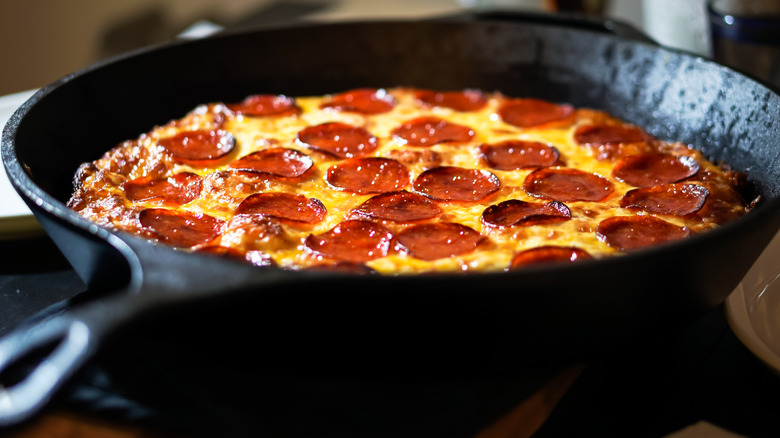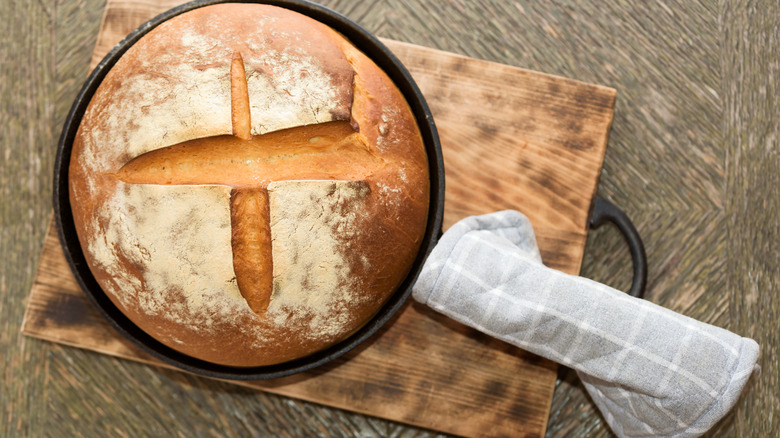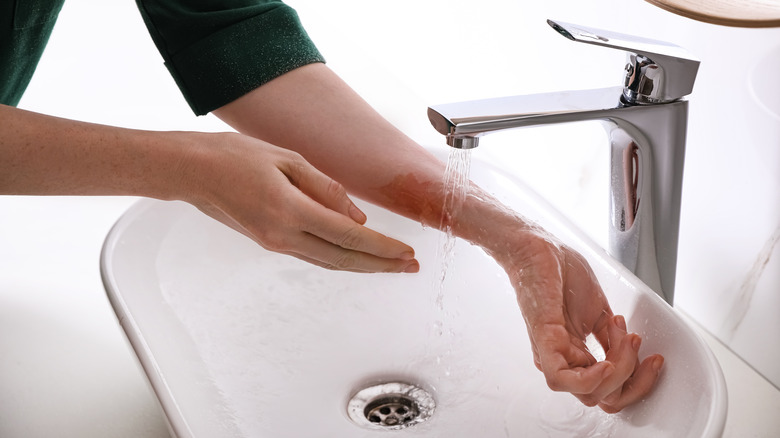Prevent Burns In The Kitchen With A Simple Potholder Tip
Too many of us have experienced a version of the following scenario — a bubbling dish comes off the stove or out of the oven and looks so tempting that we forget it's in a vessel that is still ripping hot, especially if we're not the one who cooked it. Before our practical instincts kick in, our reptile brain compels us to reach straight for the handle, leaving us with a painful burn. Thankfully, as far as kitchen blunders go, this one is easy to avoid.
One Reddit user suggests sticking a potholder or dry kitchen towel on the handle of your next hot skillet or pot to remind yourself and others not to touch it. It might seem like glaringly obvious advice, but statistics suggest that people need to hear it. According to the American Burn Association per Eskenazi Health, doctor's offices and emergency rooms in the U.S. see nearly 50,000 burn patients each year, 72 percent of whom are reported to have burned themselves at home. Keeping a potholder or dry kitchen towel handy might reduce your chances of joining those ranks.
Which burn-prevention materials to use with your cookware
Much like sunscreen, using any kind of guard on the hot handles of your pots and pans is better than nothing at all. With that said, it's helpful to keep in mind which burn-prevention materials work best with different kinds of heat conductors. For example, when it comes to cast iron, one Redditor swears by silicone handles claiming they'll "definitely save you from accidentally grabbing a hot handle."
However, if you're transferring a cast-iron dish from the stovetop to the oven, don't forget to remove the silicone handle first. While the material can protect skin from super high heat, it's not always intended for oven use. It also might not be the most sustainable option. Research from the University of Michigan showed that silicone bags "never reached the break-even point" with their plastic counterparts.
Cloth potholders and cotton kitchen towels are more environmentally friendly options. According to a paper published in Oxford Academic, they're commonly used in professional kitchens. If you prefer to use cloth instead of silicone, just make sure it's dry as a bone or it can cause serious burns. When in doubt, just remember the wise words of a Reddit commenter who works as a line cook, "Assume everything is hot. You'll live longer."
What to do if you get burned
Should you happen to give yourself a minor first-degree burn at home from touching a hot handle, there are a few important do's and don't to keep in mind when treating it. The American Academy of Dermatology suggests running the burned area under cool water in 10-minute intervals to ease the pain. To prevent infection, apply petroleum jelly (such as Vaseline) to the area up to two times a day and cover the burn with a clean, non-adhesive bandage to protect it from bacteria and the sun.
And whatever you do, don't reach for the ice. As tempting as it might sound in the moment, the Mayo Clinic says ice can damage the already-sensitive tissue of a burn and hinder the healing process. And speaking of healing, restrain yourself from popping any blisters that may bubble up on your skin because they help protect against infection.


